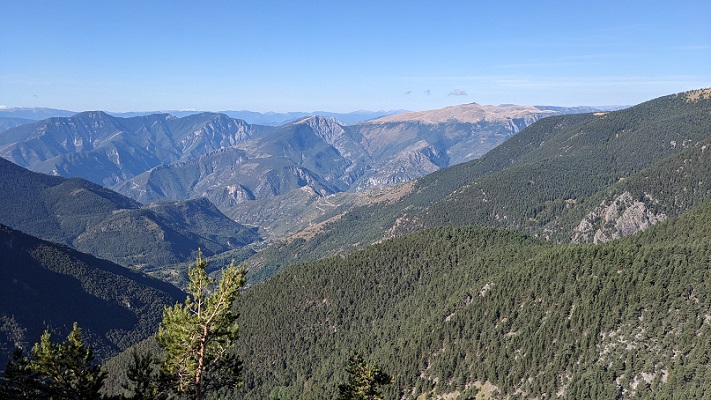
{NB this post has been corrected following a comment below}
The GR5/52 from Lake Geneva to the Mediterranean is about 650km long and crosses through two of France’s National Parks, the Vanoise and the Mercantour (and a number of other protected areas). Much of the lower parts of the route go through forest and I mean “forest”, not small patches of woodland. This is a reflection of the fact that trees cover c31% of the land in France, compared to less than 20% in Scotland, and a significant proportion of those trees are in the mountains.
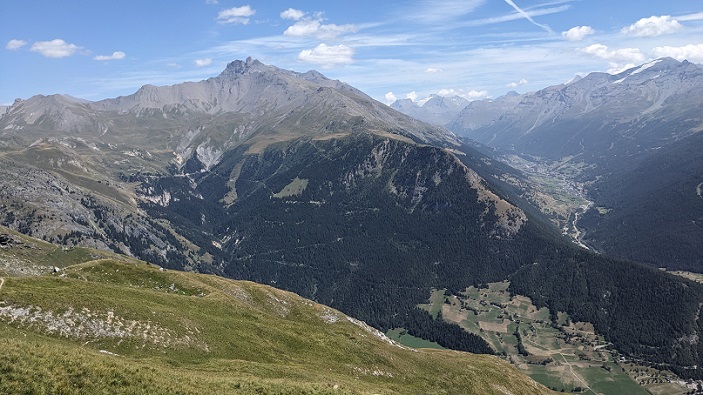
Unlike Scotland, much of this forest has developed and been managed through natural regeneration not planting. Over the 650km I saw not see a single deer fence, not a single plastic tree shelter and only one example (outside of gardens) of where trees had recently been planted.
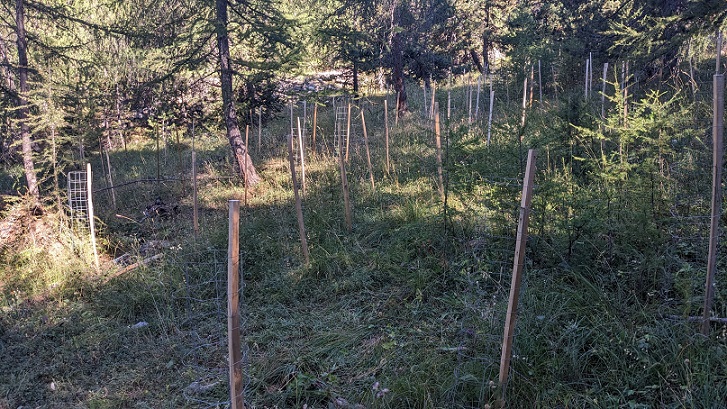
The trees that had been planted in that case had been “protected” by wire shelters, presumably intended to protect saplings against grazing animals. As in Scotland, where grazing levels are low, it was difficult to see the point as nature was doing the job. Such waste of human effort and resources (the fabrication of wire releases significant amounts of carbon into the atmosphere) is, however, the exception in France not the rule.

I did come across several examples of trees that had clearly been planted in the not too distant past for specific purposes (hazel and sweet chestnut as well as the hornbeam above) but all of these comprised relatively small areas within the wider forest.
The use of natural regeneration as the primary means of woodland expansion and renewal in France is not just a matter of tradition and culture, the way forestry has developed over the last two centuries, but part of state policy as this sign from the office National des Forets, the French equivalent to Scottish Forestry and Forest and Land Scotland, helped explain:

The way that commercial forestry is managed in the French mountains is that trees are felled when they reach a certain age but they are then replaced by “l’ensemencement naturel” – natural reseeding -which costs nothing. Unlike in Scotland trees are not clear-felled – I saw only one example of this in 650km (sorry no photo) – but selectively felled in order to promote certain species and create a varied age structure
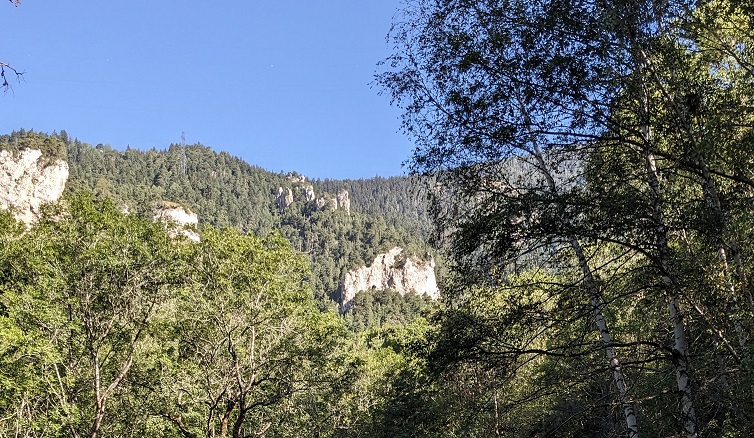
While from a distance and at first sight (top two photos) the Alpine forests – particularly those where the dominant species is the Epicea/Norwegian Spruce – may appear as uniform as a Scottish Sitka plantation, they actually contain a wide range of both tree and shrub species. This is a consequence of natural regeneration – tree seed gets everywhere if given the chance (blown by the wind, carried by animals and birds etc) – and difference in soil, the aspect of slope and the spaces created by selective felling. As the sign explains this helps “diversite biologique”
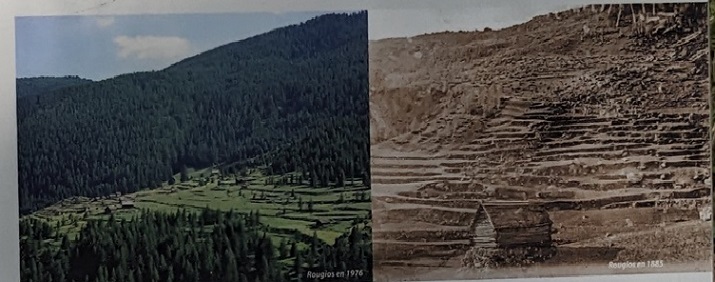
France was not always like this, as this sign graphically illustrates. By 1820 only about 12% of France was wooded. The response of the French state in 1827 was to pass a law controlling “abusive felling” of trees and grazing of livestock in the forests and there was then a planting programme (see reference in comment below) in response to the denudation of trees from the countryside.
The laws to protect trees and forests was later extended to the Nice region, where the Mercantour National Park is now located, which until the mid-19th century formed part of the Kingdom of Piedmont/Sardinia. Those basic laws have resulted in what is now often called “continuous cover forestry” which in both policy and environmental terms has generally been very successful.
By contrast to France, the UK failed to respond to the decline in woodland cover until after the First World War. It then introduced a forestry regime that was based around plant and fell but which also failed to tackle the issue of grazing animals. The result has been that for most of the last 100 years natural regeneration across Scotland has been extremely limited and now most people wanting to plant a tree in rural areas, including in their own gardens, have to protect it with fencing.
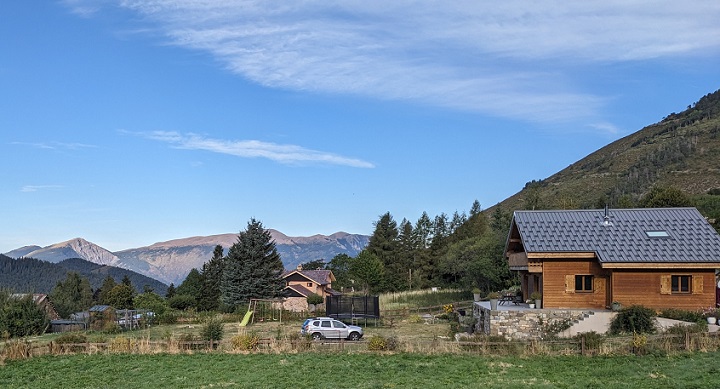
There are two main aspects to the way that that grazing in France is controlled in order to enable woodland to regenerate naturally.
The first, referred to above, is that there are controls on where livestock are allowed to graze. Traditionally this has been managed through shepherding but is now greatly assisted by temporary electric fencing which is in use almost everywhere.
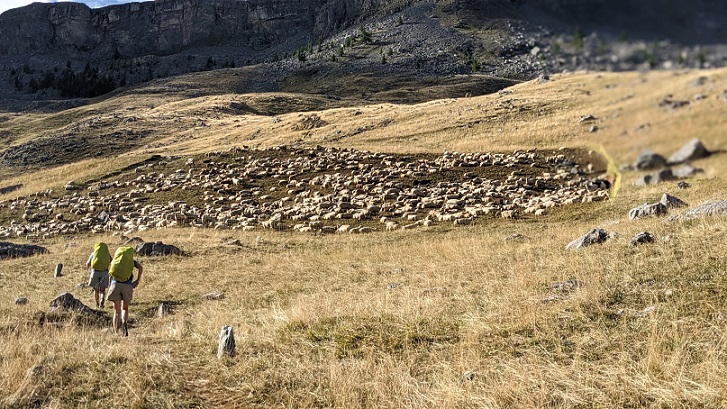
(The question of why any sheep farming continues to be allowed in what is supposed to be the core zone of a National Park s one I will consider in a follow up post).
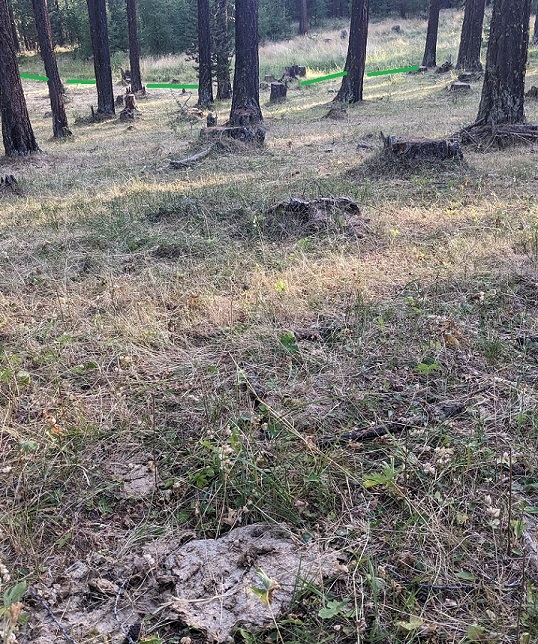
Grazing is also allowed in some woodland but again carefully controlled, “micro-managed” if you like. This is in contrast to Scotland where sheep and cattle in the uplands are treated as having as much of a right to roam as humans and there are not even mechanisms to prevent them wandering into what are supposed to be protected areas (see here for example).
The second way that grazing is controlled in France is through the hunting of wild animals, including most importantly from a natural regeneration perspective, deer. Hunting is managed through a national licensing scheme, which operates at national, regional and local levels and which takes account of the need to control numbers so that woodland can regenerate. Unlike in Scotland, where hunting is an elite “sport” and local people prevented from hunting by strict poaching laws, in France there are 1.5m people who hold licenses to do so. One needs to look no further to understand why France does not have a deer problem in the way we do.
Discussion
While there are now significant issues with the level of grazing which is taking place in the Vanoise and the Mercantour National Parks – some can be seen in the photos above – which I will consider in further posts, the basic lesson from France is that if you control grazing levels properly, woodland will expand and renew itself through natural regeneration. Moreover in my view the evidence from France shows that natural regeneration has been far more successful than planting in Scotland as a means of expanding woodland cover and has been achieved for far less environmental and financial cost.
If the Scottish Government therefore really wants to expand tree cover in Scotland to absorb carbon and help restore nature the most effective and cheapest way of doing this would be to scrap the current forestry grants system and replace it with new mechanisms to control grazing.
That there is almost no public or political debate in Scotland about this says something about the power of vested interests. The forestry industry and Scottish Forestry, the body responsible for dishing out large sums of public money to private interests, bears much of the responsibility but behind them lies the power of the landowners. It is no coincidence that in Scotland livestock grazing is almost completely uncontrolled and rather than sheep and cattle being fenced in, foresters need to fence those animals out.
Successive Scottish governments over the last seventy years have also allowed stalking estates to increase the number of deer on their land with the result that, even if stock were fenced in, natural regeneration of woodland would be impossible. The fundamental issue here is that unlike in France, the basic assumption of government is that landowners should have a right to manage their land as they wish without state “interference”.
While the management of forests in France shows how over-grazing by large herbivores, both domestic and wild, could be controlled, there are two further land management factors specific to the way land in Scotland is owned and managed for sporting purposes which impact on the ability of woodland to regenerate naturally. The first is muirburn, something that I have not seen in the Alps – but is practised in the French Pyrenees – which incinerates any tree that seeds naturally across large swathes of Scotland. The second is predator persecution, designed to boost grouse numbers artificially, which means that the raptors, foxes, stoats and weasels which otherwise help prevent tree saplings from being consumed by voles and hares are almost absent from much of Scotland. Hence the awful polluting plastic tree tubes that are blighting our countryside.
The underlying lesson from France about woodland policy in Scotland, therefore, is that if the Scottish Government really wants to expand tree cover it needs to reform land-ownership and instigate measures which enable all the factors which preventing trees from regenerating naturally to be properly controlled.

Although the ONF may now be using natural regeneration widely, much of the forest in the southern French Alps results from planting in the second half of the nineteenth century as part of “La Restauration des Terrains en Montagne” (RTM) programme. I don’t know of a good reference in English but
Louis de Crécy. 1982 La Restauration des Terrains en Montagne, actualité d’une entreprise centenaire. Revue forestière française, 34 (5), pp.7-17.
( https://hal.science/hal-03423422/document ) gives an overview. The RTM was, at least in part, developed to prevent erosion & flooding in the alpine valleys.
Thanks Doug, I am very grateful for this, I knew there had been planting in the Pyrenees for those reasons and will correct post to reflect that fact. Nick
I finished walking this route about 4 years ago. One highlight was disturbing a wolf about 25m away on the northern edge of the Mercantour. I know they are not popular with sheep farmers but patou guard dogs are used to deter predators which would include other dogs. https://simplysavoie.com/guard-dogs-in-the-french-mountains/
I hoping to write a post on this, Nick
Hi nick. Excellent post. Totally agree. I have been arguing for years that we need to introduce a legal responsibility to cull deer in Scotland potentially through an innovative tradeable cull system . I can send those articles if you drop me an email. Keep up the excellent work. I also produced a map of natural woodland cover for the Cairngorms that would regenerate under a sustainable deer culling regime. Douglas
well said Douglas. Right now the land monopoly ‘mafia’ have cleverly absolved themselves of the legal responsibility for deer impacts via the concept of deer being ‘res nullius’. If we go for ‘res publica’ we have to be aware of the potential for massive compensation claims for things like collisions with vehicles. We of course lack the kind of strategic national management SERVICE regimes such as the federal/state departments in North America or Fennoscandia. We don’t even have proper national parks where the exemplar should be.
There is another very important difference between France and Scotland that has a substantial impact on the prospects for natural woodland regeneration: that of the presence in Scotland of very large numbers of non-native invasive tree species that have been planted for commercial reasons. These INNS (mainly Sitka and Norway spruces, western hemlock, and lodgepole pine) seed profusely and their seeds are blow for miles, particularly when there is hard snow on the ground. If we in Scotland simply reduce grazing pressure to allow natural regeneration then in large areas we would end up with woodlands dominated by INNS. Seedlings of species like Sitka spruce and western hemlock can grown successfully even in the shade of mature native trees like Scots pine or oak. They then can grow up through the branches of those native trees, overtop them, and kill them.
It is perhaps a measure of “the power of vested interests” namely “The forestry industry and Scottish Forestry” that these INNS are not even recognised as such in the Scottish Forestry Strategies, since to do so would acknowledge the increasing damage done to our native woodlands by the invasion of non-native commercial species, which, were the “polluter pays” principle be properly applied, would require a similarly large and increasing expense to remedy.
Unless sufficient effort is expended to remove INNS from native woodlands and to severely control them in areas of expansion, (however achieved), Scotland’s native woodlands, as such, will simply cease to exist over vast areas of our country.
Fantastic post, Nick. When ranting about deer overpopulation I often mention the natural regeneration that took place so quickly along the verges of upgraded stretches of the A9 when the fences keeping deer off the road also prevented new growth being eaten. Another benefit of natural regeneration over planting is that it allows the development of scrub, an important environment, in particular for many birds and invertebrates. In so many places the natural vegetation just needs the grazing pressure to be reduced so it can recover by itself. But the vested interests will do all they can to stymie anything that they think gets in the way of the current sporting estate model.
Great information Nick. Thank you for the post. Let us hope Scot Forestry and the Government look into what would help Scotland increase woodland cover and biodiversity more effectively and sustainably.
Nick, sounds like a great walk – very envious. Doug’s point is well made although alpine woodland was strictly retained for the most part as protection against avalanches and erosion rather than for conservation. The point of reference was human welfare. Around the same time Geoffroy Saint – Hilaire proposed introducing yaks into Alpine valleys and kangaroos to the Pyrenees for meat and leather! I know that you are ” very sceptical” of some peer reviewed and published research “based on my own experience”. Michael Bess in his 2003 book The Light Green Society – Ecology and Technological Modernity in France 1960 – 2000 quotes 28% woodland cover for France and says “no old growth forest survive in France at all”, “although woods are “actually in fine shape” and expanding. Post war he says 90% of small farmers gradually left the land and large areas reverted to “friche agricole” – abandoned fields and pastures slowly re-entering the natural cycle of spontaneous regrowth. Hunting as you say is more widespread in France – not so good for bears and wolves. 8% of French land that qualifies as ‘protected natural spaces’ broke down to 2% remaining close to pristine natural state with severe statutes enforcing a ‘hands off” policy including the inner zones of National Parks like Vanoise and the Mercantour . The other 6% allowed a higher degree of human activity such as hiking. Parcs Naturels Regionaux cover another 11% of France and have much looser regulatory statute including planting woodland. Bess concludes that the French diverted from their ruinous 1950s government sponsored trajectory on land use and moved relatively swiftly with considerable costs and exertions to restore and strengthen many important ecosystems throughout France. Michel Barnier, born in the French Alps and of Brexit negotiations, when Environment Minister past a law emphasising prevention over restoration which probably influences much of the landscape along the G5. Even as Gaullist he didn’t ignore France’s head lopping past and republican values when it came to land. Certainly a lesson for Scotland there.
Hi Duncan, just to clarify on “peer reviewed research” it is really important that research is properly (ie critically reviewed) and other researchers should be included in this. My scepticism about some peer reviewed research is about the peers, e.g research into raptors which is conducted and reviewed by those with sporting interests or research into forestry reviewed by those with forestry industry interests.
Nick, you make a fair point. Some sectors can be echo chambers for views and healthy scepticism is generally a good thing. Whether this applied to research by raptor specialists being reviewed by other raptor specialists or forestry research being reviewed by other forestry researchers I’m not sure. However, I am sure reputable academic journals will say that their peer review process for published papers is objective and impartial. The alternative GB News type conspiracy rabbit hole direction doesn’t sound great.
Aye, Nick and when it comes to national strategic management we should never put the biological management of large mammals into the hands of the main user group, because regardless of whether these are recreational or pastoral users they have only one definition of the word better——–MORE.
The “elite sport” referred to in the piece is not reflected in the statistical breakdown of the cull, the overwhelming of which is now undertaken by paid contractors in the National Forest Estate, where for the last 30 years the predecessor of FLS have been trying to reduce the population of deer; this has resulted in a near doubling of numbers over the period, outwith the land areas where ‘traditional sport stalking ’ (now in fact much more heavily culled and closely regulated deer numbers grace of NatureScot’s watchful eye) was hitherto the sustainable land use method. To compare forests in southern France with the commercial cellulose short rotation silviculture as practised in our more northern latitudes is more of an exercise in contrasts in almost every manner; the hunting culture is very long established in continental Europe, whereas in the U.K., outwith traditional sporting estates (ie in the commercial forests where the deer numbers are allegedly now burgeoning), there is comparatively less by way of hunting pressure per Hectare of biotope. To try to place the blame for the shortcomings of those mis or undermanaging the National Forest Estate is to miss the mark; NatureScot are well enough aware of deer populations over the open hill areas of Scotland, yet curiously quiet about the results per hectare from the forests. If one feels that the land ownership pattern should be rearranged to suit your programme’s desired outcome, it would do best to begin with the break-up of the country’s biggest landowning interest, coincidentally the one wherein the ‘problem’ you suggest lies, according to the annual returns of numbers of deer per hectare bring culled annually.
Expropriation of property is no straightforward matter to arrange, but should you be seriously looking to do this, do at least try to have a basic idea as to where your issue really lies, along with some sort of alternative plan with which to bring employment and economic activity into the areas you intend to target, as the public purse is hard enough pressed with numerous I’ll conceived and misdirected schemes already.
a start would be the collection of AGR http://www.slrg.scot
The problem lies with 50% of landowners, both woodland and sporting who do no culling whatsoever. Indeed they actually encourage the deer population to maximise sport shooting. We carried out the largest ever survey of sporting estates ever undertaken and this was a key finding. That’s why we need legislation to ensure deer are managed sustainabily.
A great post. I was in the Bavarian alpine region visiting relatives a few weeks ago. Again I saw no tree tubes, no clear felling and plenty of natural regeneration. Most of the woodlands I saw were also mixed conifer/deciduous. Also much better for access. Because while there are theoretical access rights under the Scottish Outdoor Access Code many parts of Southern Scotland are becoming physically impenetrable due to sitka mania.
Andy. Germany and Austria have also strict legislation around culling deer through hunting. Even rich landowners have to do it. Different hunting culture underpinned sensible legislation
I have often wondered, Douglas, had our 1997 Scottish Land Commission report to the SNP been not just accepted, but acted upon, would we now be in this situation?
Andy. Germany and Austria have also strict legislation around culling deer through hunting. Even rich landowners have to do it. Different hunting culture underpinned by sensible legislation
Thanks Nick. Excellent post. The independent deer working group made 99 recommendations in 2019, most of which the Scottish Government finally agreed to before the last election in March 2021. 30 months later the government is finally legislating some of these recommendations. Last week an order to remove the male seasons for deer (one of the recommendations) came before the Rural Affairs and Islands committee. A counter motion was presented by Edward Mountain (Conservative) MSP to annul the change. His motion passed by the casting vote of the chair. This effectively blocked one of the 99 recommendations. On its own, the change to the male seasons is perhaps more symbolic than making a huge difference (as in most cases authorisations can be obtained for controlling males in the close seasons). However, this change and the other recommendations planned for forthcoming legislation are also about a cultural shift in the way we manage our deer and our land. The blocking of it by Edward Mountain on the spurious grounds of welfare (the Scottish Animal Welfare and major animal welfare charities do not oppose the change and the gamekeeper interests that Edward Mountain represents support snaring, putting terriers down fox dens and are frequently associated with illegal poisonings) highlights the deep entrenched power of sporting estates and their resistance to change. This statutory instrument (to amend the male close seasons) will now come to a vote to the whole parliament in the next few weeks. It is crucial that MSPs understand that constituents support this change if we are to see any progress in deer management and ultimately woodland regeneration in Scotland.